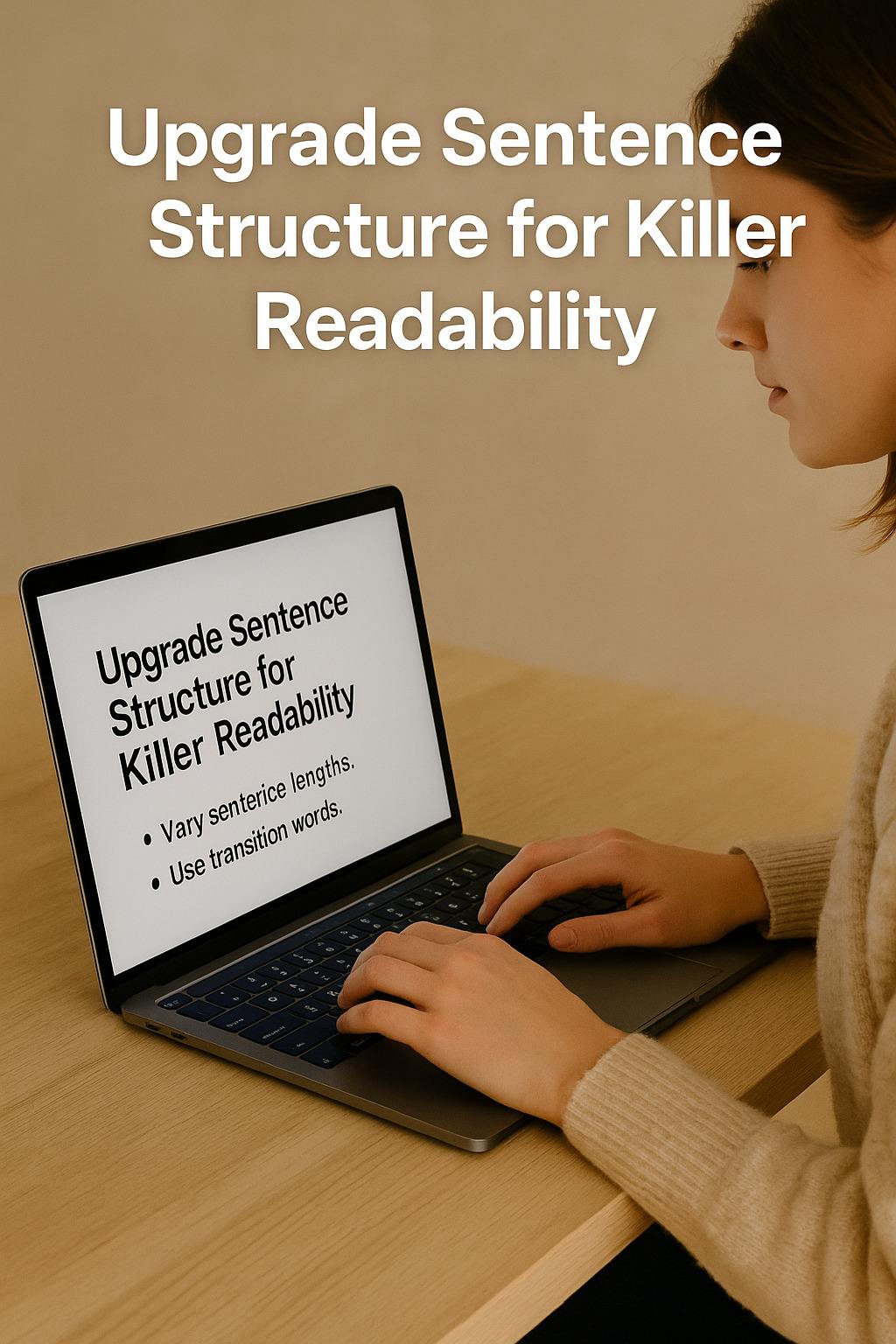Discover How Your Topics Spark Multiple Stories
Every blog idea has layers hiding just beneath the surface. When you split your topic into unique angles, you multiply its value. Let’s say your topic is “healthy eating.” This single idea can branch into meal prepping, food labels, or even snackable content. That’s what makes your topics multiple stories a winning formula. You move from one concept to many story breakdowns, building SEO depth.
Writers who use this method unlock reader engagement and blog optimization. It’s more than creating more content. It’s about content planning that improves reader retention, fuels participatory content, and builds layered storytelling. You get better reach, more clicks, and deeper value for your readers.
Why Breaking a Topic Sparks Deeper Engagement
Breaking down ideas into smaller, bite-sized posts increases readability. Readers process short sentences and single ideas more easily. By using story format variation, you help your audience dive into content clusters of useful, engaging posts. This builds curiosity and encourages scrolling.
Plus, topic segmentation enhances content personalization. Google rewards pages that cover multiple perspectives, so when you offer alternative story angles, your rank improves. A well-organized structure, sharp content angles, and thoughtfully curated material can significantly boost your Google search rankings.
Organize Content Like a Pro Using Smart Headings

Every great blog needs a structure. Smart headings act like signposts in writing. They help direct readers while making the blog’s structure easier to follow. Start with an H1 heading that introduces the core message. Next, divide your main topic into smaller parts using H2-level subheadings.
Each section should have content clarity and follow consistent paragraph structure. Use writing techniques to arrange ideas logically. Readers love a flow that feels natural. Strong post organization equals longer time on page and better content authority.
Master Flow with Transition Words That Convert
Transition words are the unsung heroes of good writing. They link thoughts seamlessly, giving your content a more refined and natural flow. Use terms like “However,” “Next,” or “For example” to move the reader through your points. This maintains blog flow and keeps attention strong.
Good transitions also improve readability techniques and cognitive engagement. Your article becomes a guided experience, not just scattered thoughts. That flow helps with SEO-friendly content and enhances reader behavior analysis.
Always Start With the Reader’s Main Curiosity
Most readers want answers fast. That’s why using the inverted pyramid is so effective. Start with the key point, then build detail beneath it. Don’t bury the lead. Say it early and clearly. This approach respects your reader’s time and builds reader trust.
Lead with personalized storytelling or a unique stat. Then, offer depth. Keep content tailoring in mind while writing, so each post feels designed for the person reading it. When you lead with value, readers keep scrolling.
Use Clear, Simple Words Readers Instantly Understand
Don’t confuse clarity with dumbing things down. Clear writing is powerful. Use a ninth-grade vocabulary or lower to make your message fast and effective. Writing simplification improves both reach and understanding.
Avoid words like “commence” or “utilize.” Say “start” or “use” instead. This boosts web readability and helps with mobile readability. Simpler words also improve your readability score, helping you get more love from search engines.
Short, Snappy Sentences That Pack a Punch
Online readers have short attention spans. That’s why short sentences matter. Break long thoughts into digestible chunks. Say more with less. Every sentence should offer new information or ask something important.
Use writing rhythm to vary structure. Short sentences grab attention. Longer ones explain ideas. Mix both for a post that feels alive. Tools like readability techniques and writing tips help here.
Cut Passive Voice to Boost Authority Instantly
Passive voice weakens writing. It hides the subject. Say “The reader liked the article,” not “The article was liked by the reader.” Choose action over vagueness. Keep your voice strong and direct.
Minimizing passive voice also improves tone and style. Active voice supports story-driven writing and improves your message’s impact. Don’t let unclear phrases cloud strong ideas.
Upgrade Sentence Structure for Killer Readability

Monotone writing is a turn-off. Mix up your sentence structures. Begin some with dependent clauses. Start others with action words. Use questions too. A varied style keeps readers engaged.
This technique supports structure and clarity, boosts content standability, and enhances cohesive narrative. The best posts sound human and hold the reader’s ear from start to finish.
Visuals That Tell Stories Better Than Words
Readers love images. Visual content breaks up long pages and improves understanding. If you’re writing about healthy snacks, show pictures of the food. Talking about trends? Add data dashboards or interactive timelines.
These visuals support your content strategy, enrich digital storytelling formats, and increase user engagement. Avoid turning your content into a block of uninterrupted text.
Make Paragraphs Snackable and Scroll-Friendly
One idea per paragraph. Keep it under four lines. That’s how you make content snackable. Big text blocks overwhelm readers—especially on mobile. Light, focused writing keeps them scrolling.
This style boosts mobile readability, increases time on page, and supports participatory reading. Think of each paragraph like a mini-conversation with your reader.
Real Examples That Hook and Hold Attention
Show, don’t tell. That’s the golden rule. Instead of saying “short posts work,” show a case study. Prove your point. People remember stories more than facts.
Here’s a great example: One blog used user-submitted stories on mental health and saw traffic double. These personal takes increased emotional understanding and earned more shares. Writing examples wins readers.
Turn Questions into Engagement Goldmines
Ever wonder why FAQs work so well? Questions in content keep readers thinking. Ask things like, “Why does sugar drain your energy?” Then answer them.
This approach enhances strategic content development, boosts audience interaction, and fosters collaborative journalism. Plus, it mirrors how people search, making it great for SEO linking.
Internal Linking That Fuels SEO and Retention
Smart internal links guide readers through your content. Link to old posts that support your new one. This encourages more clicks and better understanding.
It also boosts reader retention, builds content authority, and enhances blog strategy. Search engines see this as a sign of intelligent content consumption.
Authority-Boosting External Links Done Right
Don’t fear outbound links. Refer to experts like Harvard Health or BBC News. Linking to trusted sources adds weight to your arguments.
This supports media transparency, enhances editorial ethics, and proves you value valid perspective synthesis. Your authority goes up. So does your Google trust score.
Know Your Audience and Write Like You Mean It
Who are you writing for? Parents? Students? Teachers? Speak their language. Use the tone they understand. This builds platform loyalty and audience targeting.
The right tone and style lead to more shares and deeper community engagement. Personalize the message. Use story personalization that connects.
Subheadings That Keep Readers Glued to Content
Use subheadings often—every 300 words or less. They divide the content visually and serve as clear indicators of the article’s structure. Readers love skimmable posts.
This helps with subheading frequency, improves readability techniques, and supports digital media transformation. If your content’s easy to scan, it’s easier to enjoy.
Each Paragraph, One Clear Purpose or Emotion
Rambling loses readers. Stick to one idea per paragraph. If you switch topics, start a new one. That clarity helps keep focus sharp.
This also improves topic modularity, strengthens content segmentation, and enhances customized story delivery. Keep your message laser-focused.
Revise Until It’s Sharp, Clear, and Magnetic
Your first draft is just a start. Read it out loud. Does it flow? Fix what doesn’t. Good writing takes editing.
Focus on clear writing, cut unnecessary words, and refine each sentence for precision. This improves your readability score, keeps readers engaged, and increases content personalization.
Use Lists and Tables to Maximize Skimmability
Skimmability is king. Use content format variety like tables for comparison. For example:
| Topic | Angle |
| Healthy Eating | Meal Prep for Kids |
| Mental Health | Real Stories from Students |
| Writing Tips | How to Cut Passive Voice |
Tables add clarity. They also improve blog optimization, assist in content clusters, and boost user experience.
Rank Better with 1–2 Smart Focus Keywords
Don’t overload your content with keywords. Use just 1–2 keyword focus terms per post. Make them natural. Make them count.
This supports SEO linking, aids in Google ranking, and keeps your writing reader-first. Let keywords blend in, not stick out.
Optimize Slugs and Titles for Google’s Eyes

A post’s optimized slug is crucial. Make it match your title. Keep it short, relevant, and keyword-rich. Like this:
Title: Your Topics Multiple Stories Slug: your-topics-multiple-stories
Match these for better search engine visibility. It also improves alignment between slugs and enhances personalized news delivery.
Wrap Up with a Takeaway That Sticks
Finish strong. Restate your point clearly. Don’t just fade out. Give readers a final tip that stays with them.
Good conclusions create emotional connection through the media. Add a question or invite action. Let your last words echo in their minds.
Final Words: Write Stories That Truly Resonate
Modern storytelling requires a clever and precise approach to truly connect with readers. Focus on co-authoring narratives, use participatory content, and aim for depth. Readers don’t just want facts. They want meaning.
By embracing your topics with multiple stories, you create blogs that speak, inspire, and rank. Each layer is another chance to connect ideas, build narrative ownership, and earn your place in the search results.
Frequently Asked Questions (FAQs)
1: What does “Your Topics Multiple Stories” really mean?
It means splitting one blog idea into smaller, powerful content pieces. Instead of writing one long post, you explore multiple story formats with alternative story angles, which improves reader engagement and Google ranking.
2: Why should I break my blog topics into smaller stories?
Breaking down ideas increases readability, supports content segmentation, and allows deeper content personalization. This strategy leads to higher reader retention and more chances to rank across various search engines.
3: How do I know if I’ve chosen the right story breakdown?
Ask yourself: Does each post offer a unique perspective, use clear subheadings, and add to the larger theme? If yes, then you’re successfully using story format variation and layered storytelling.
4: What are the SEO benefits of using this method?
This strategy allows for better keyword usage, internal links, optimized slugs, and content authority. Each mini-topic adds depth, making your content more visible to Google’s algorithmic suggestion engines.
5: How can I keep my content skimmable for mobile readers?
Use short sentences, clear paragraph structure, and strong formatting techniques. Make your posts snackable content with subheading frequency and interactive timelines where necessary.
6: Should I use visuals with each sub-topic?
Absolutely. Visual content, such as explainer videos, data dashboards, and interactive debates, enhances user engagement and supports your digital storytelling formats.
7: How do I avoid overwhelming my audience?
Focus each paragraph on one idea or emotion. Use writing tips, avoid passive voice, and stick to a ninth-grade vocabulary for maximum clarity and mobile readability.
8: What if my topic feels too broad?
That’s a perfect chance to split your topic using topic segmentation. Create a content map or table that breaks it into curated coverage for better content structure and planning.
9: How do I track if this method is working?
Monitor user-submitted narratives, bounce rates, and time on page using data dashboards. Improved blog engagement and longer sessions signal your content strategy is working.
10: Is this approach good for all types of blogs?
Yes. Whether you write about healthy eating, civic knowledge, or editorial ethics, this technique adapts well. It supports media transparency, platform loyalty, and even boosts subscription model success.
ALSO READ:
Modern Homes Love the Magic of Natural Pyntekvister
Webfreen.com Fashion: Trending Styles You Need Now
Unlock Secret Manga Realms with Olympus Scanlation

